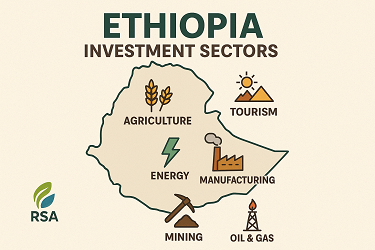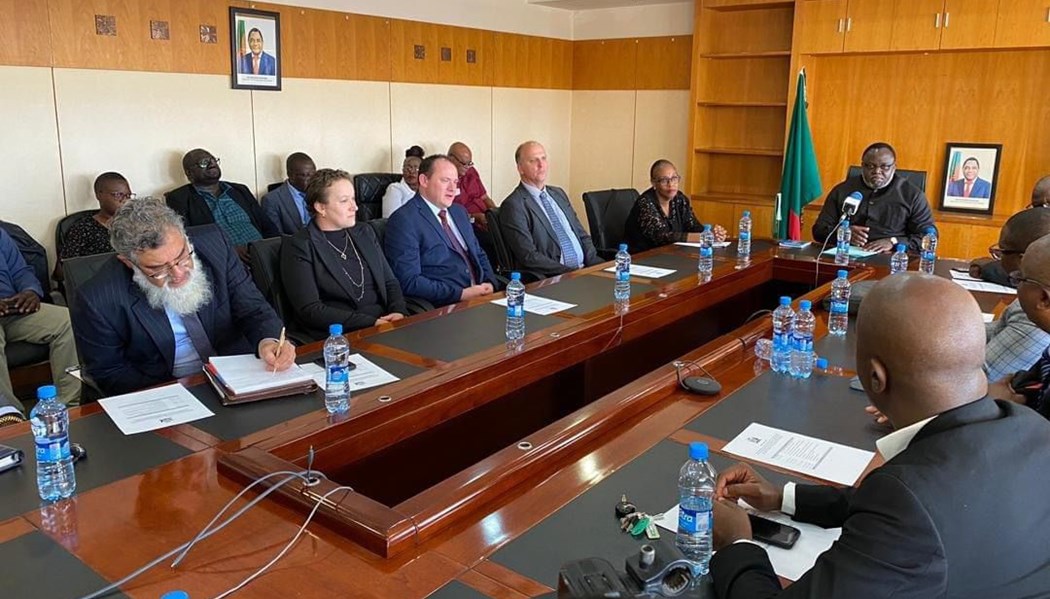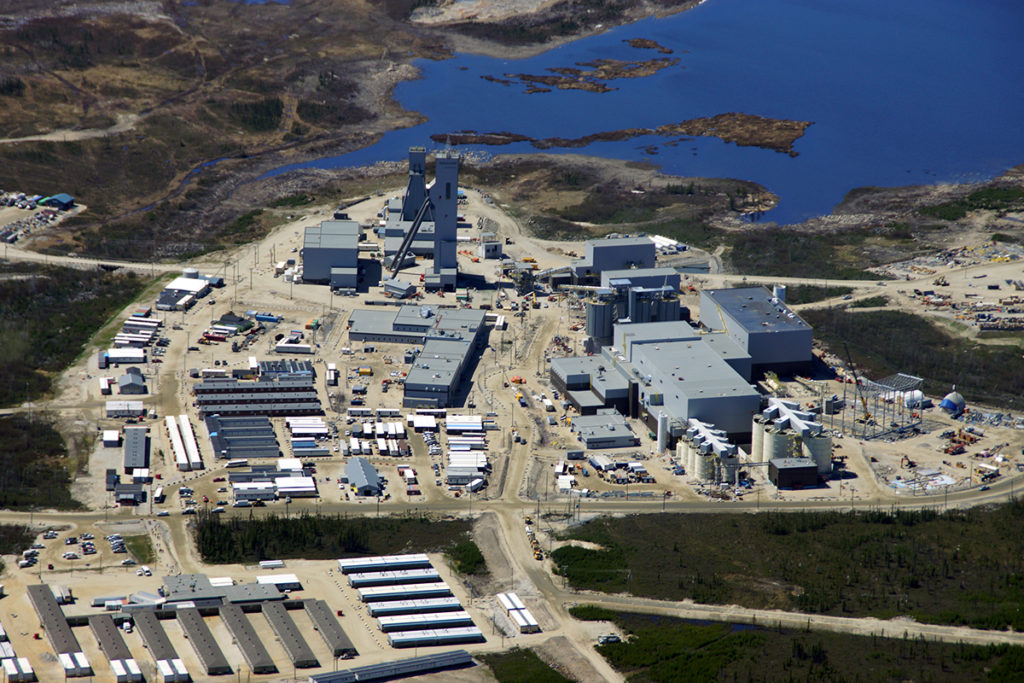Mining Other

Ethiopia Investment Hotspots & Emerging Opportunities 2025

With a population exceeding 125 million, sustained GDP growth of 6.5–7.2% in 2025, and foreign direct investment (FDI) inflows exceeding $3 billion annually, the country presents high-potential opportunities for investors seeking growth and diversification.
Its strategic location provides access to neighboring markets such as Kenya, Sudan, Djibouti, and South Sudan, and the broader African market via the African Continental Free Trade Area (AfCFTA). Investors who prioritize **opportunities first—and understand the risks second—**can capture sustainable returns across agriculture, manufacturing, energy, mining, tourism, and financial services.
Agriculture & Agro-Processing: Unlocking ESG Potential
Opportunities:
Agriculture remains Ethiopia’s largest employer and a backbone of the economy. Export crops like coffee, pulses, and horticulture remain in high global demand. Government initiatives promoting climate-smart agriculture and sustainable land restoration enhance opportunities for investors who integrate Environmental, Social, and Governance (ESG) considerations.
Agro-processing facilities linked to industrial parks allow value addition and export potential. Investors can also leverage regional trade corridors to supply neighboring countries and capitalize on AfCFTA trade benefits, reducing tariffs and expanding market reach.
Risks:
Supply chain disruptions and climate shocks—particularly in Amhara and Oromia—can impact production. Political instability in localized districts necessitates careful selection of project locations and local partnerships.
Manufacturing & Industrial Parks: Incentivized Growth
Opportunities:
Ethiopia’s industrial parks provide ready infrastructure, tax holidays, and preferential utility tariffs for priority sectors. Key hubs such as Lemi Industrial Park, Hawassa Industrial Park, and Dire Dawa Free Trade Zone attract international investors in textiles, cement, leather, and light manufacturing.
Corporate tax holidays of up to five years, VAT exemptions, and government-backed export incentives make early entry particularly lucrative. Efficient connectivity to ports via Djibouti and other regional corridors ensures seamless export logistics.
Risks:
Foreign exchange (Forex) shortages, logistics challenges, and security concerns near industrial zones require strategic planning. Collaborating with experienced local partners can help mitigate operational risks.
Energy & Mining: Strategic Projects with Long-Term ROI
Opportunities:
Ethiopia’s energy sector is rapidly expanding, with large-scale hydropower projects like the Grand Ethiopian Renaissance Dam (GERD) and Koysha Dam, alongside solar and wind initiatives. These projects provide stable domestic power and potential exports to neighboring markets.
Mining operations in gold, tantalum, and potash offer strong ROI. The government encourages foreign participation with long-term leases, tax holidays, and streamlined licensing processes for compliant investors.
Risks:
Regulatory delays, environmental and ESG compliance obligations, and security concerns in Tigray, Oromia, Amhara, and Benishangul-Gumuz regions must be managed carefully. Contingency plans and insurance coverage are recommended.
Tourism & Infrastructure: Unlocking Growth
Opportunities:
Tourism is expanding with new destinations and improved infrastructure. A mega airport construction is on the pipeline at the outskirts of the capital in Bishoftu, Oromia region, which will enhance both domestic and international connectivity.
Ethiopian Airlines’ expanding network provides investors access to emerging tourism hubs. Opportunities exist in hospitality, eco-tourism, cultural tourism, and transit-oriented projects. Tour operators and investors can capitalize on the growing middle-class demand and the region’s unique historical and natural attractions.
Risks:
Security perception in Tigray, Oromia, Amhara, and Benishangul-Gumuz may constrain short-term growth. Investors are advised to implement local partnerships, contingency planning, and risk mitigation strategies.
Financial Services & Digital Economy: Early-Mover Advantage
Opportunities:
Ethiopia’s financial sector liberalization is creating openings in banking, insurance, and financial technology (FinTech). Early entrants into mobile banking, digital payments, and ESG-aligned financial products can capture unmet demand from a growing urban and middle-class population.
The Ethiopian Securities Exchange (ESX) is also opening new avenues for investment and capital raising, benefiting companies that comply with regulatory frameworks and ESG standards.
Risks:
Operational complexity, currency volatility, and inflation pressures are notable considerations. Partnering with local regulatory experts and financial consultants ensures smoother market entry and compliance.
Strategic Insights for Investors
- Regional Connectivity: Ethiopia’s location provides access to East Africa and beyond. The AfCFTA enhances export potential and market reach for compliant businesses.
- Infrastructure & Incentives: Industrial parks, energy projects, and transportation corridors improve operational efficiency. Tax holidays, VAT exemptions, and preferential utility rates boost profitability.
- ESG Integration: Sustainability-aligned projects attract international capital and ensure long-term operational resilience.
In conclusion, Ethiopia’s 2025 investment landscape offers high-growth opportunities across multiple sectors. Success depends on thorough due diligence, strategic partnerships, ESG integration, and regional risk awareness. Investors who leverage liberalized sectors, infrastructure projects, AfCFTA integration, and early-mover advantages can achieve sustainable returns while navigating operational and security challenges.












